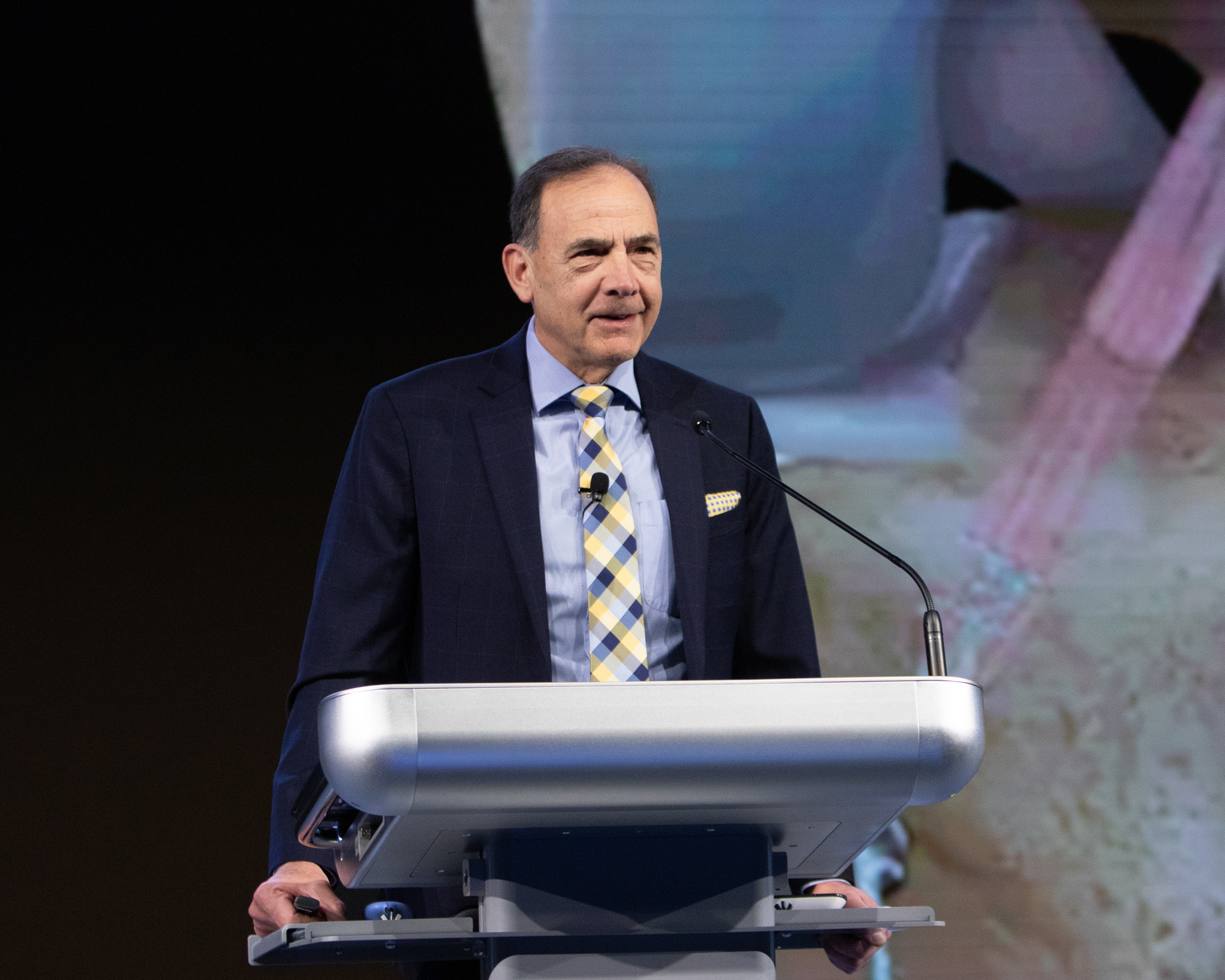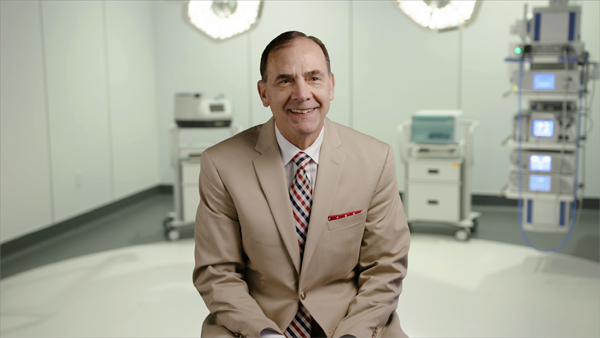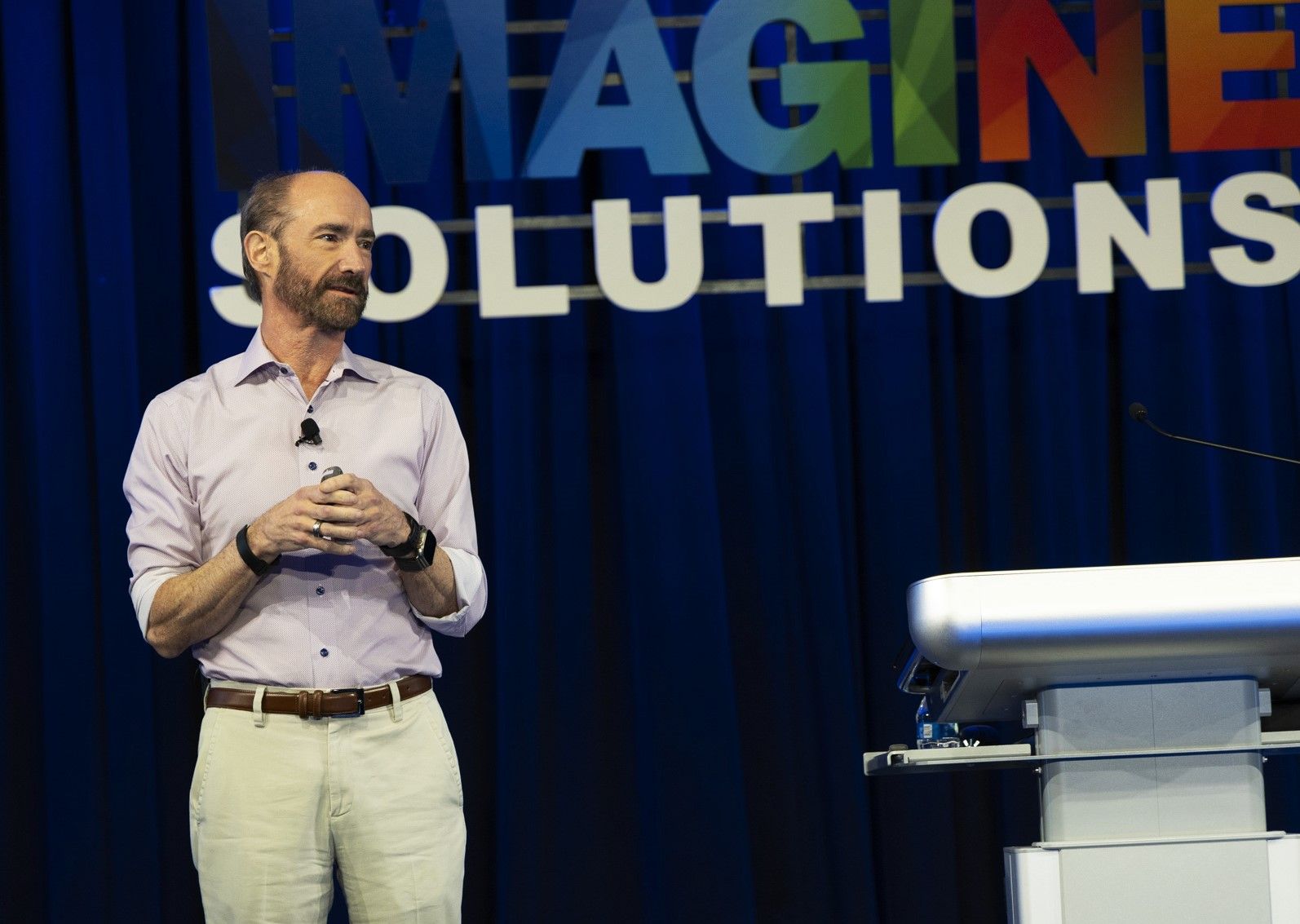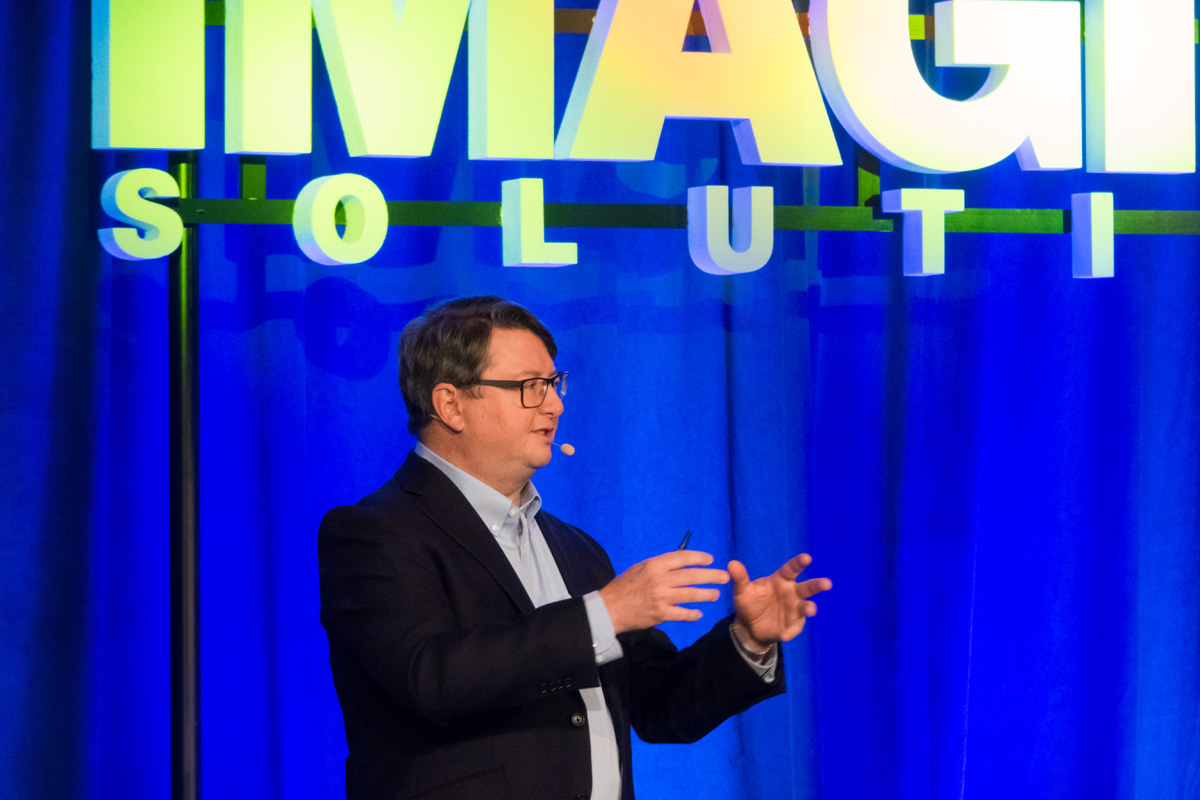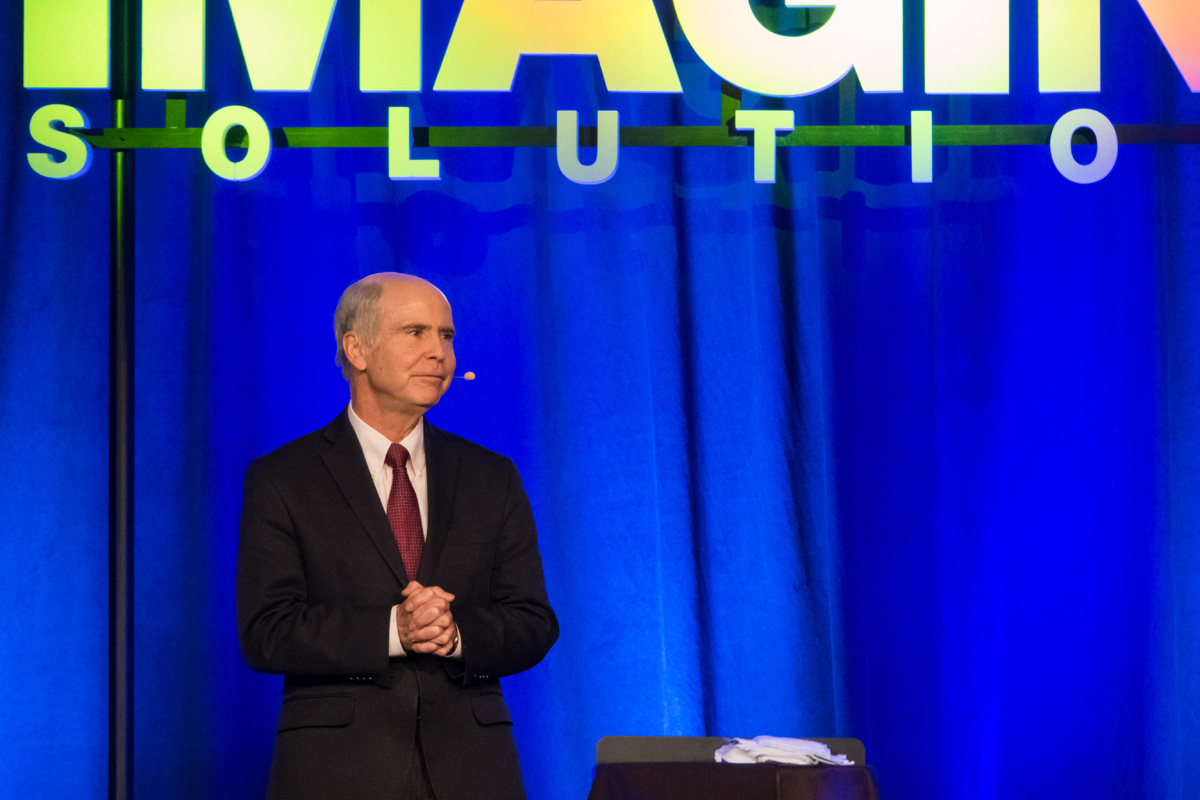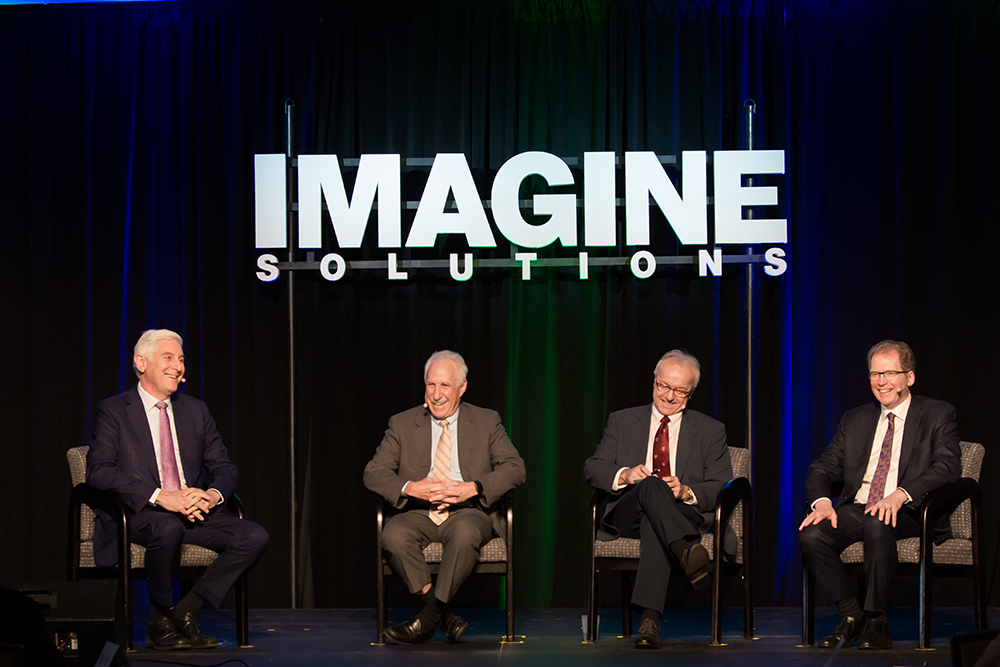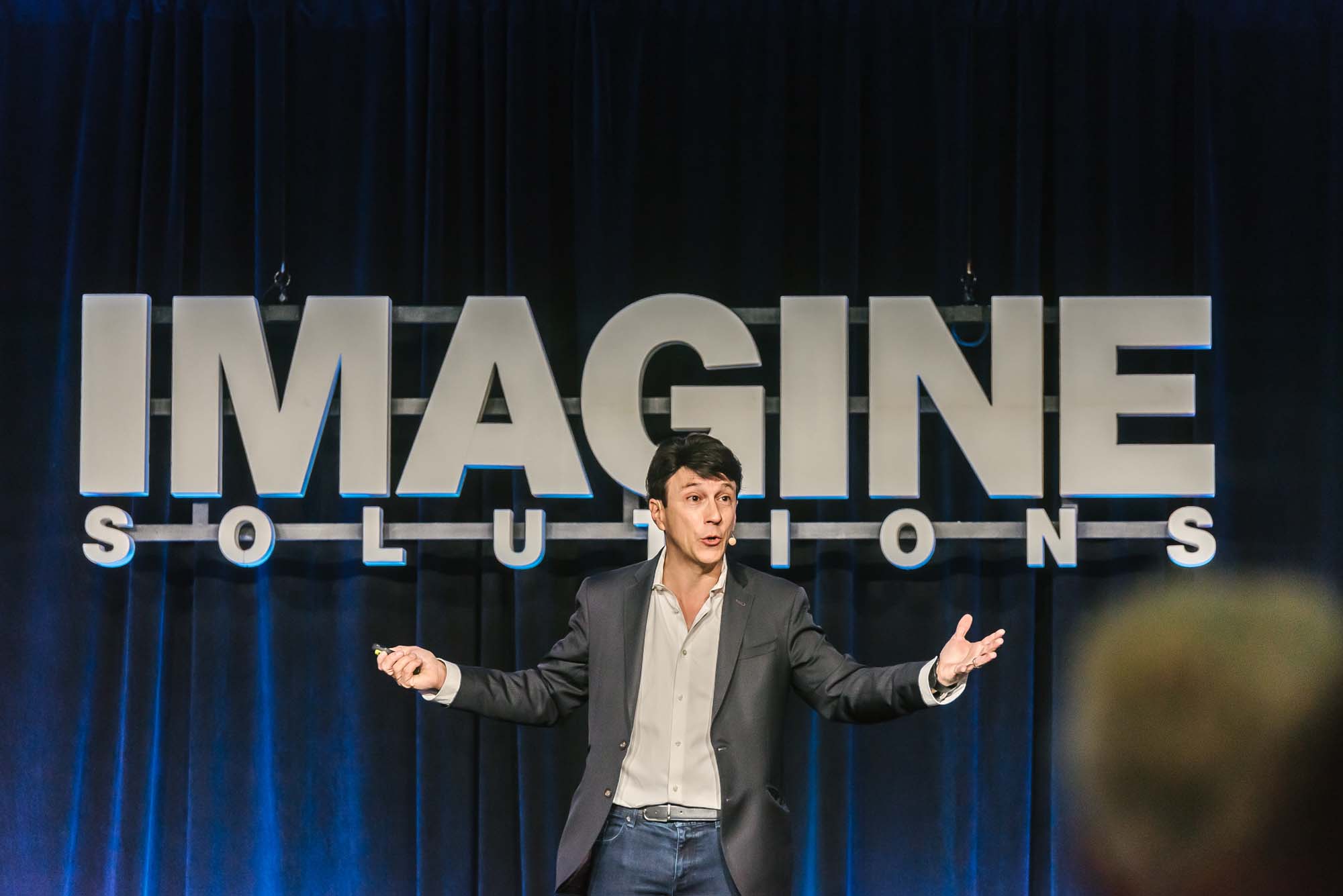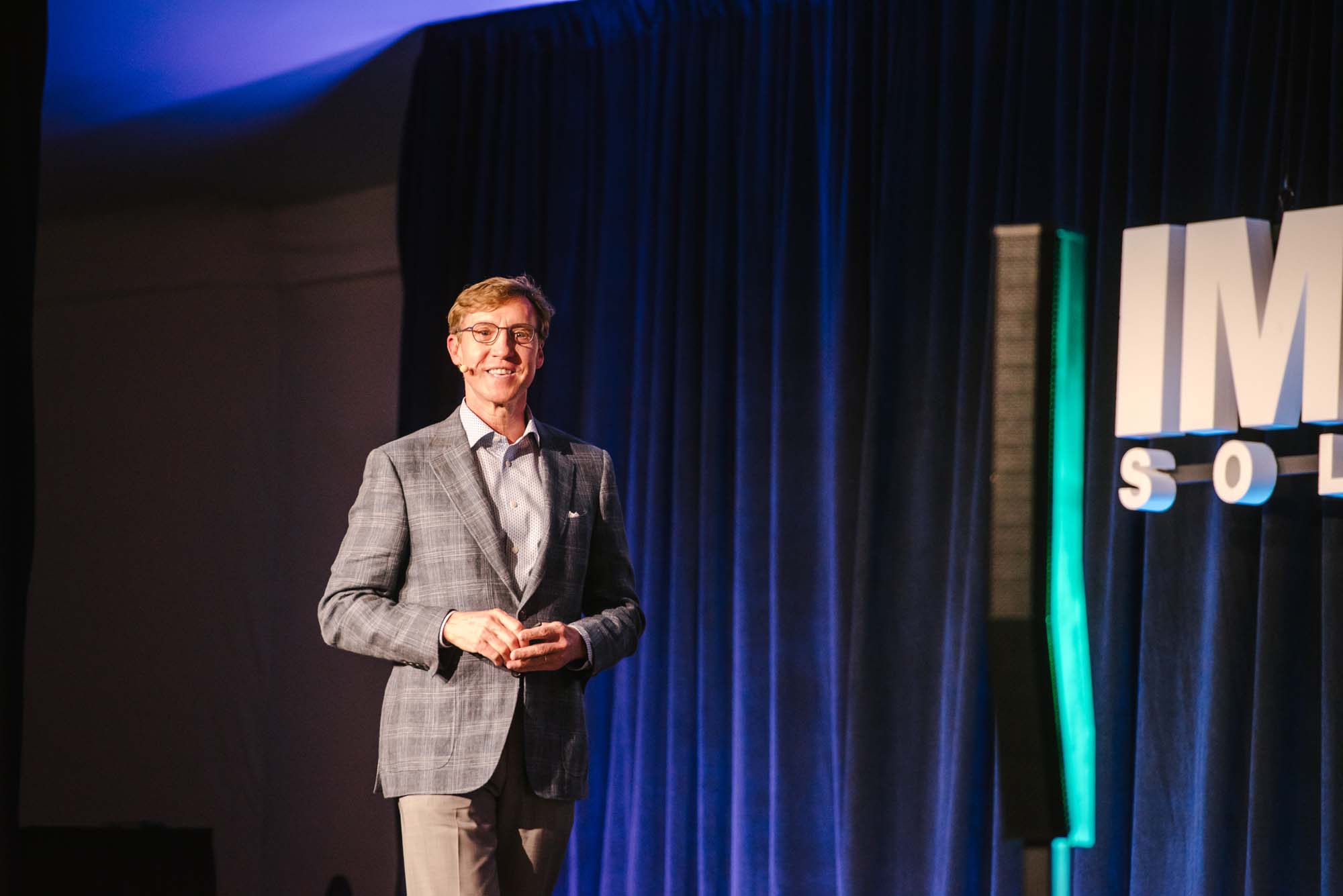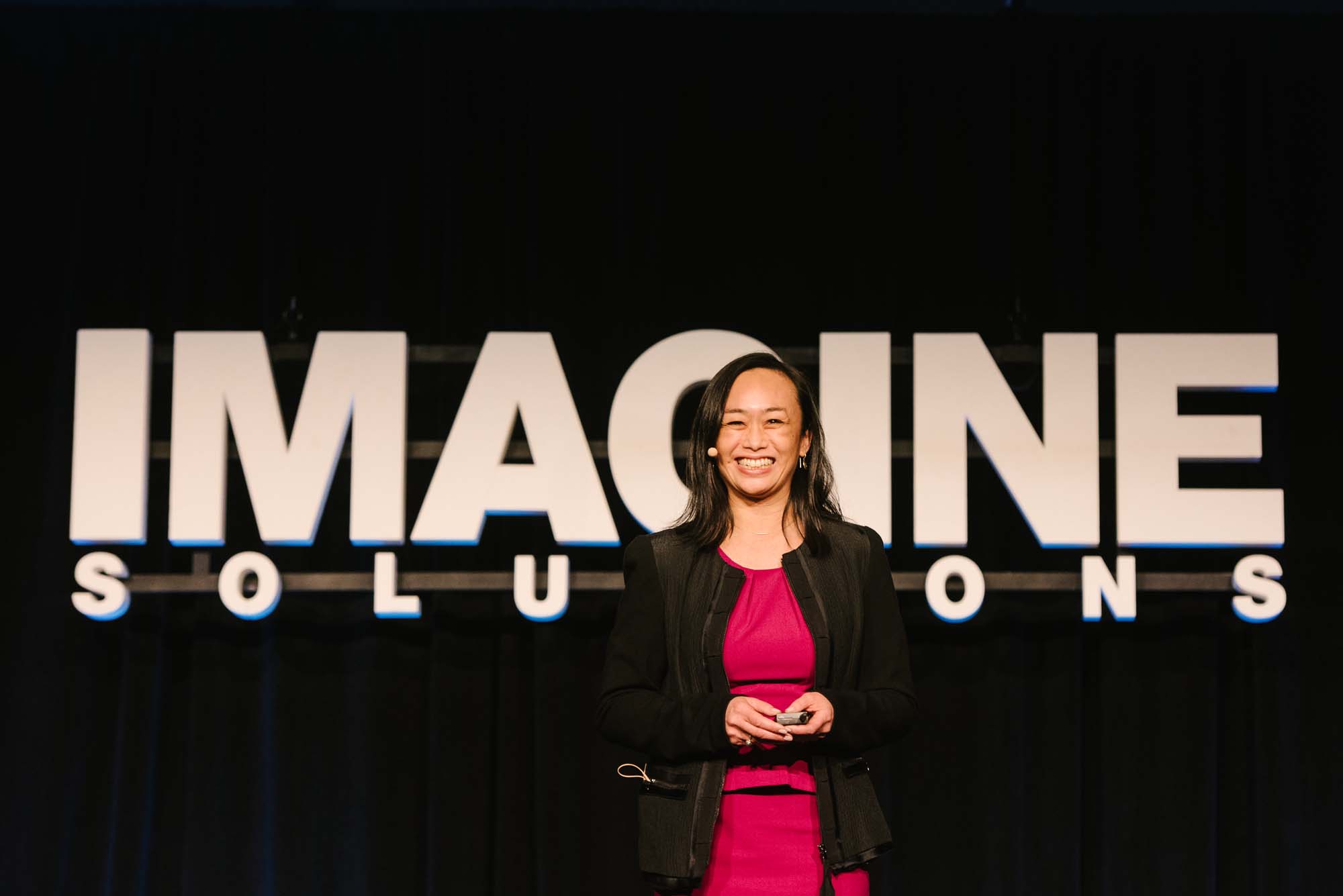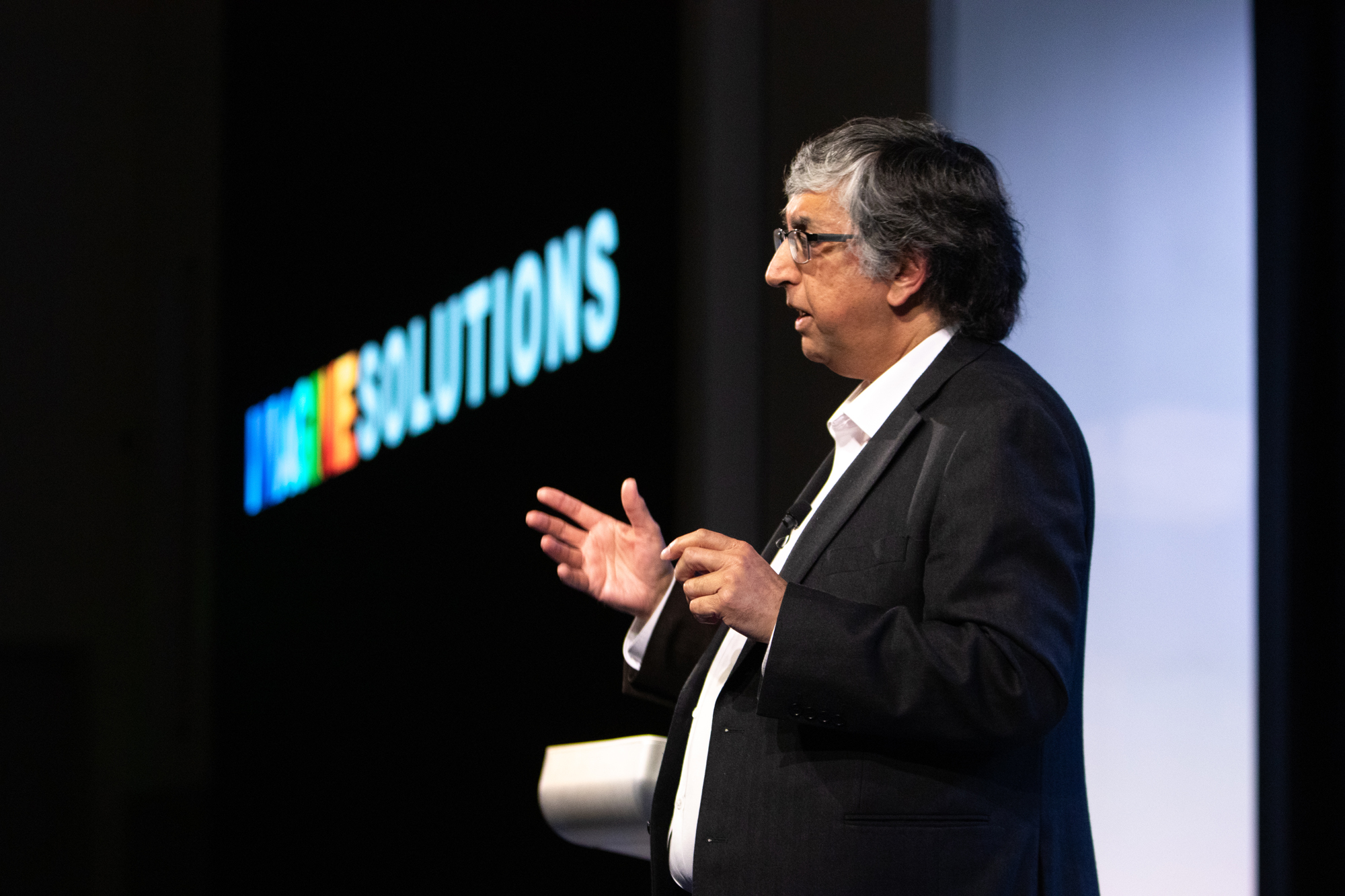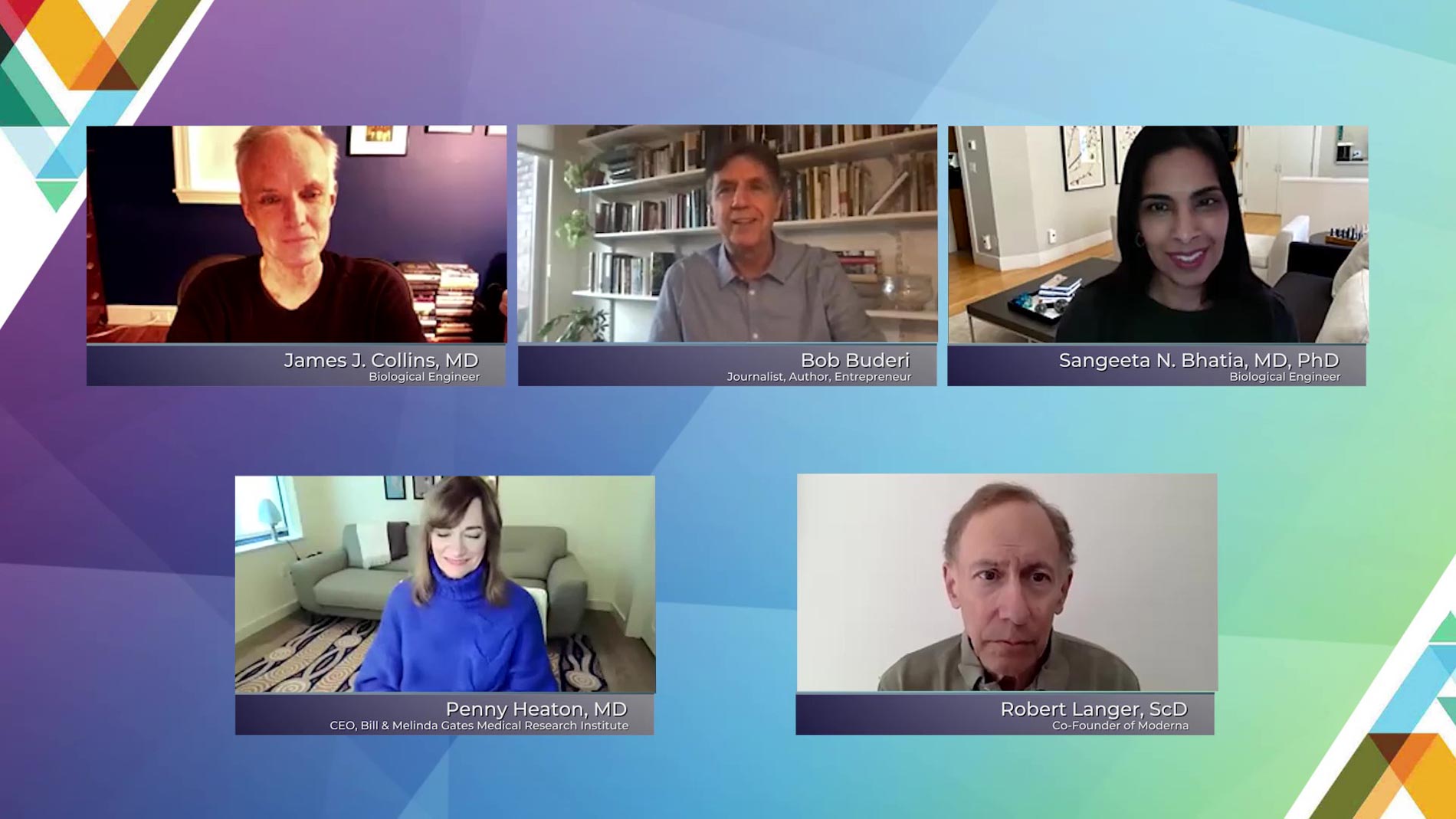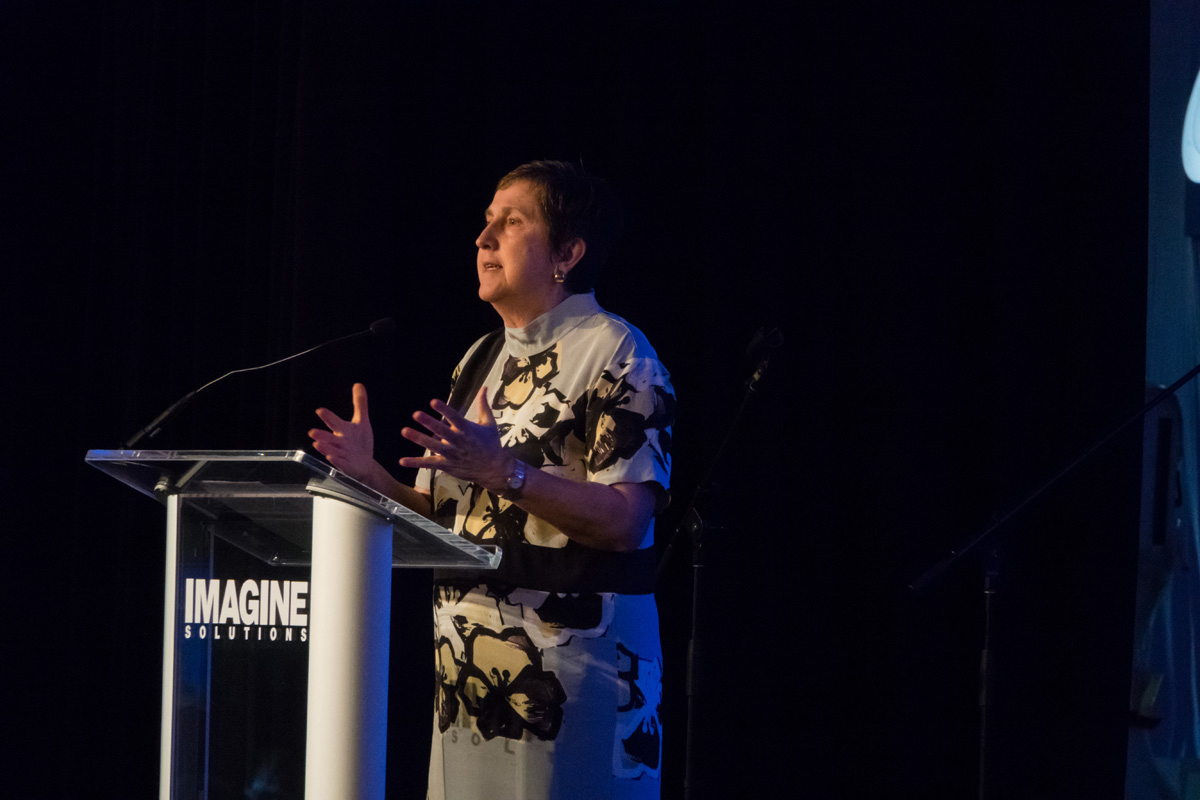Orthopedic Breakthroughs
Renowned orthopedic surgeon Patrick Smith revealed the cutting-edge science behind today’s joint replacements and sports medicine breakthroughs. With humor and clarity, he walked the audience through advances that are helping people move pain-free again—from weekend warriors to elite athletes. Smith’s talk highlighted how innovation, precision, and patient-centered care are transforming recovery times and surgical outcomes.
00.00
[Music] nch here in Naples is partnering with the Hospital for Special Surgery to open a worldclass orthopedic hospital here in Naples this year Dr Patrick A Smith is a nationally recognized expert in minimally invasive sports medicine and he has been appointed head of sports medicine at the new NCHHSS Hospital for Special Surgery As everyone in the New York area and really across the country knows when you need work on your joints and on your bones you go to HSS Dr Smith is going to share insights on this new facility and what is in store as well as on breakthroughs in minimally invasive surgery and orthobiologic therapies to treat conditions like early osteoarthritis Please welcome Dr Patrick
01.01
Smith [Music] Hi Pat welcome All yours The clicker is I think the clicker Thank you Good morning Certainly uh it's my pleasure to be here Uh I want to talk to you today We're going to change tune a little bit talk about some new developments in surgery I'm the guy that likes to use those medieval instruments that you're seeing in the back over there So that's my that's my game So we're going to talk about what we term nanoarthoscopy And also I'll spend a little time at the end and talk about the field of orthobiologics with stem cells and PRP which is always very popular Again I'm happy to be part of the new uh hospital which will be opening May 1st here on a mocky down the street for the combined collaboration between the hospital for special surgery out of New York and Naples comprehensive health here in Naples So just by way of background um years ago long time ago I
02.00
was an athlete Uh was so long ago you can't even get a color picture This is uh from my career as a basketball player in 1970 before I was injured You can see I have the short shorts which nobody wears anymore and the uh Converse seekers which had no support So a lot of sprained ankles but any event I injured my knee at that time and uh ended up having a a major surgery that uh took my athletic career out but really spurred me to uh a career in orthopedic surgery and particularly to help athletes So I was at the University of Missouri for 38 years and took care of the athletes there as head team physician uh which was a great part of my career and then I was recruited to come here to Naples to run the sports program at the new hospital So my goal always was to deliver care for the athletes that I took care of that was better than the archaic methods that was used we used back in the 70s when when I had my knee surgery So we're going to talk about surgery We're talk particularly about arthroscopy So I want to educate you about this field Uh this is a a a picture from a magazine many years ago
03.00
of what was termed the new arthroscope which was a way to look into the joint So we visualize the joint through small incisions So basically what we do is we distend a joint with fluid We have a camera with a light source allows us to look into the joint and we work in the knee the shoulder elbow wrist hip ankle foot It goes back a long way It was first described in Japan in 1918 It was brought actually to North America by Dr Robert Jackson out of Toronto who was a good friend with Reinhold Schmiding who's the founder of Arthrex and actually helped Reinhold in the early days get his company going with the with the new arthoscopic instruments that Reinhold was developing So we go from what you see on the left which is what I had done a big giant incision that some in the room as old as me may also have these big incisions to where we started using our scope to make smaller incisions seen in the middle for doing what we call ACL reconstruction which is a major ligament that we work on for sports injuries And now on the right you can see a technique that I was involved with developing here with a what we call an all- inside technique with minimal incisions So the scope is
04.00
less invasive but things have gotten a lot better because as we know in our world technology changes everything which you're seeing here today and it's happened in the field of arthoscopic surgery for us and that technology is the nanoscope or the nano needle that was developed here at Arthrex and I just want to show you the conventional arthoscope you see here has a 6 millm sheath and the and the camera is 4 millimeters that fits in the sheath we have these little ports that allow us to put the fluid in and again the light is attached to the camera Well now the nano needle is basically half the size So the sheath goes from 6 millm to 2.4 millimeters and the size of the actual scope is now 1.9 millimeters compared to four It's half the size So to show you what a difference this is is this pictorial here You got a picture of a dime The c the general surgeons use what's called a laparoscope and that's 10 millimeters in diameter Our traditional scope was 4 mm but now look what we have a 1.9 mm basically needle scope So the camera is a chip on a stick
05.00
with a light source and we can look into your joint now through this very small incision So it's incisionless basically because it's a needle and so we can do this procedure under local anesthesia now So it's much safer We do not have to put you to sleep to look into your joint So that has some major advantages No scars less pain We do not use narcotics postoperatively because it's so minimally invasive and we see an inherently faster recovery with our patients with the nanoscope So I was a part of the work that was done here at Arthrex developing uh the product and uh we I was able to do actually the first human case in July of 2019 when I was back in Columbia Missouri Brian Keller here was the product manager and so he came to Columbia and we had four cases scheduled that day to do the first nanoarthoscopy So there's a picture from the operating room that day with me working But we had a problem and as scientists know you make advancements through adversity And we had a big problem with visualization
06.00
And what we didn't realize when we tested everything here at Arthrex we would work on cadaavvers And cadaavvers of course have no blood And so we could see everything just fine Well what happened in the human situation is all of a sudden we had encountered some minor bleeding and we did not have enough flow So I couldn't see So it was really kind of a tough day for us here Uh because we realized right away that we had a problem with fluid management So that was a tough phone call for me that night I had to call Reinhold and say "Rin we had a problem We we didn't have enough flow We we couldn't do the procedure with the nanoscope because we just we just didn't have enough flow to see." But Arthrex innovation only in five months came up with a new high flow sheath And so what this did the adversity of that first day led to further development And so then the Arthrex developed this high flow sheath where now we could get enough fluid through the nanoscope that we could actually see and do the work we need to do So this was revolutionary and this really is what has jettisoned into the future So in addition to the scope
07.01
though now we had to have small instruments because when I do work in the knee or shoulder I have to have the instruments to do the the procedure So Arthur has developed this whole litany of instrumentation the medieval instruments you see in the back table there that we used to do our work So again the idea of the smallness also came in the smallness for the instruments that we use as shown here So here's a picture of a knee joint done with the nano and it's high definition It's great Look at the visualization That's a femur and there's a meniscus right there You can see very beautifully coming in here uh so we can do the work that we need to do just as well with the traditional arthroscope with a small needleiz scope You know we've gone from X-ray which everybody knows about was kind of our first way to visualize joints Then MRI came along and now we're to the point where the nano I think that we will see a point in time where you may come in with an injury and instead of you know getting an MRI we will put the nanoscope into the knee joint as an
08.01
outpatient as the clinic basically just as a diagnostic procedure It's going to be that advanced So I think the nano really is going to change the field of of arthoscopic surgery and diagnosis as well as treatment So where can we do the nano we've talked about the knee joint but we also do it in the shoulder elbow because it's small Now we can do things in the hand and wrist that never could be done before It could be used in the hip and then the foot and ankle So it's all over joints that we can use this particular procedure So about the knee this is again a case looking at a knee This is just how it's done uh where we have our small and tiny little uh placement of the scope on the right and our instruments on the left We can do what we call meniscus work which is a common arthoscopic procedure Many of you may have had that done We can do what we call debriement or condroplasty We can take out loose pieces and now we can even repair the ACL which never could be done before through this tiny little scope Many times in the knee it's very difficult to do some more complex procedures and sometimes we'll actually
09.01
put two scopes in because we can see in hard places to visualize by placing two of the scopes in place Shoulder very important in the shoulder also for what we call instability where athletes will have dislocations of their shoulder and tear what's called the labreum or the cartilage We can fix that with the nano We can work on the biceps tendon can do some rotator cuff work and again it's secondarily a camera That's nice because in the shoulder we do a lot of work in the joint and we also do work on top of the shoulder basically what we call the bal space So we have to look in two different places So we can actually put a nanoscope in the joint and work up on top on the rotator cuff and see both So really advantageous to help us do better surgery with the nanotechnology foot and ankle Very uh uh revolutionary work has been done here uh for impingement where you can take off bone spurs as you seen here with a little bit small shaver cleaning up inflammation in the ankle joint Again small joint but we can see very well with use of the nanoscope It's also helpful in the ankle for fractures and
10.00
it can be used in the foot for release of planter fascia for people who have chronic planer fascitis type pain and the wrist Another advantage very small joint as you can see here but a very small needle 1.9 millimeters We can do work on what's called the triangle fibroartilage which is a cartilage that gets torn in the wrist It can be used for ligament repair It can use to be treated for CMC arthritis or base of the thumb where a lot of people have arthritic type pain And also it's helpful for fractures a lot of distal radius fractures And to asssure that the alignment is accurate you can use the nanoscope at the time of fracture fixation So a huge advancement there This is a technique that arthrex has developed for release of the carpal tunnel under local anesthesia Carpal tunnel is a very common problem with uh pressure over the media nerve And this particular device is totally safe Allows to release the nerve watching with the nano And you'll see in this video this patient that had this procedure done is totally awake And you'll see her just here in a second Total procedure time
11.00
There she is wide awake And the procedure time was 1 minute basically is all it took And so she's wide awake and walks out uh done finished So again this is technology that's changing our world in surgery making patients experiences that much better So you're awake and it's an outpatient So again big advantages no anesthesia and the need for pain medication the risk of opioid dependence goes way down by doing this new technology for surgery We're fortunate that at the new hospital which again opens May 1st down the street Uh HSS and NCH arthrex has supported uh four nano suites as seen here Beautiful murals on the wall So while you're having your surgery you can watch the fish on the wall or we can put a virtual reality headset on or you can listen to music and I'll fix your knee or your shoulder uh in in this relatively painless way at an outpatient and you're totally awake
12.00
So proven benefits faster recovery quicker return to work with the nanoarthoscopy less pain fewer surgical complications low risk of infection very important Again we've talked about the need for no narcotics postoperatively And really the better visualization may lessen future needs of MRI and such because we've we see everything so well with the nanoscope Over 50,000 have been done You know that first case in July of 2019 we've come a long way 50,000 procedures as performed as of this February 94% of patients would do the procedure again on surveys two weeks they perform they uh re realize they have better quality of life than what they would have expected with traditional surgery compared to those patients and in the ankle 96% of patients return to normal activities within four weeks So again this has really revolutionized surgery for us and for you the patient to get you back on your feet back to your activities much quicker with this minimally invasive procedure but it's expanded now from
13.00
orthopedics Now cardiothoracic surgeons are actually using the nanoscope using it for uh plural biopsies using it for valve procedures now So it's gone from orthopedics now to cardiac spine surgery Another big development uh you know you don't want big incisions in your back and and this and spine surgeons are now using this nanotechnology for nerve work They can use it for placement of what are called pedacle screws for surgery and help with fusion So again the expansion of nano has gone uh amazingly So let's just switch a bit to orthobiologics I want to talk a bit about this and we need to start with some basic science about what is in blood And in blood you have your red blood cells and you have your platelets We're going to really focus on the platelets That's the key when we talk about the benefit of orthobiologics You also have what are termed white blood cells Multiple types basil neutrfil einitaphil monocy lymphosytes We don't really want the white blood cells particularly in in treatment of knee arthritis that I'll talk about So this is a nice uh animation of what a
14.01
platelet looks like in your blood swimming around has these little tentacles basically and the platelets are key because they have over 1500 proteins and they have over 300 what are called growth factors and the growth factors are what really make orthobiologics happen The growth factors that are released from the platelets they have anti-inflammatory effects They're anesic They modulate healing antimicrobial and they're anti-deree So there's all these great quality of the growth factors That's what we want to distribute if we give you an injection say of something like plateletri plasma or PRP or we talk about stem cells in a minute So I think the best way to think about PRP or plateletri plasma it's basically a nutrient for joint health It's like the fertilizer to help things grow So for me I was uh lucky enough to be affiliated with Arthrex and they developed a product called a college condition plasma or ACP and I studied this back in 2016 and was interested in the effect of this for treatment of knee
15.00
arthritis Now at that time the FDA had never had not had a study done that sanctioned that it was safe for patients to have this done So this was the first FDA study approved to look at safety They were interested to make sure that if platelet uh rich plasma was administered to patients with knee arthritis that it did not cause any side effects Well we were interested did it help the patient So both were accomplished with this study and what I looked at is I had 30 patients who had the uh plate rich plasma and those that did not had just a saline injection and what we found for the FDA we had no side effects We had no problems with administering the plateletri plasma to our patients and every patient everyone that had the ACP treatment that had knee arthritis had significant pain relief at one year So it was both safe to do and it was efficacious And you can see here what it looks like The platelets is the yellow layer And the advantage of this particular technique is it's a centrifugation Takes five minutes We draw your blood 15 cc's spin it down in
16.00
a centrifuge extract that yellow platelet layer and that's what we inject we don't inject the red blood cells or the white blood cells So it's the platelets and those growth factors that have the positive effect for treatment of neoa So again a nice way to treat uh patients with arthritis without necessarily a surgical approach So where else do we use it besides knee arthritis i use the PRP for common tennis elbow Very common problem particularly here in Florida CMC arthritis is a very common problem that females tend to get The base of the thumb joint gets arthritic and painful This is a great way to treat that without surgery You can use it for planter fascitis I've done that Rotator cuff problems berscitis inflammation PRP can help that better than steroid It's more lasting than steroid And I've used it for Achilles tendon problems So this type of injection is biologic It's your blood It's your platelets It's not anybody else's And again it has these positive effects for healing due to the growth factors and lessens the need for surgical intervention There's a new
17.00
product of the ACP that arthritis has developed called ACP max So the idea here is we draw more blood Regular ACP is only 15 cc's This takes 60 cc's and it's a double spin system with the centrifuge as seen here It takes a bit longer but it allows us to get a higher plate platelet concentration And there's some evidence to suggest that the higher platelet concentration may be better We're studying that now comparing it to the regular ACP but this is kind of the future For instance if I treat somebody with regular ACP for knee arthritis I usually recommend three injections a week apart Now with the ACP max because it's more platelets I've been doing just one injection instead of three And I'm seeing so far anecdotally the same positive effects And we're studying this in a multi-center trial right now to prove that the ACB max does as well as the regular ACP So next let's talk just a bit about stem cells This is obviously a super hot topic I don't want to get too much in the weeds scientifically here for you
18.00
But basically a stem cell is a cell that can reproduce and and and divide itself but also it can form into other cell types like red blood cells fat cells neurons muscle cells cardiac cells epithelial cells True stem cells are more embryionic which really is not what we do today There's a lot of regulation with the FDA So we do not give true stem cells If you say you're getting a stem cell treatment you're not getting a true stem cell What we're really giving you is what we call mezzenymal or skeletal stem cells These are specialized MSC's that only are going to transform into tissues of the skeleton which would be bone osteoblast or fat adopyes or condraittes which is cartilage and maybe neural cells possibly So it's a different subset than a true stem cell It's an MSC So this is what you would get if you're going to get a stem cell treatment So where do they come from most commonly it's from the bone marrow You can also get them from fat and that's another option But bone marrow is
19.01
really most common is from the bone marrow itself And you have to extract it And so what we do is typically the iliac crest is where we go and under local anesthesia with the special needle We can extract bone marrow from the uh iliac crest but it has to be prepared So we have a special system we call the angel system here that basically takes that bone marrow and concentrates the stem cells There's not a lot of stem cells messenymal stem cells in the bone marrow So we have to concentrate them to get the best effect for administration So this angel system that arthrex has is what we use to do that Where do we apply it i use it in rotator cuff Rotator cuff tear patients many times we have problems with the cuff fully healing especially if it's a revision repair So on the left you can see I put a couple patches where I soak the patches in the bone marrow stem cells and then I close the rotator cuff over the top to help the healing The second picture there it's used in the foot and ankle for helping diffuse joints Uh it has a great biologic product product to help the bony healing So in this particular uh
20.02
diagram you can see there's some staples placed across the joints and then the bone marrow is applied at the same time I've used it in the knee joint to help healing of graphs where we can actually put the uh the mixture of of messy stem cells in the tunnels where we pull our graft in to helped our graphs heal It's been used in spine as well to help with fusion and healing of spine problems So in conclusion for biologics I think it's a very promising field for joint health and preservation but we need much more science and I would ask you to be aware of false and claims and hype that's out there of regenerative medical centers that claim they can cure arthritis No the you're not going to regrow cartilage Really what we're looking at is pain relief for administration of either stem cells or PRP But we need much more science to show what works the best especially with some of the costs that are involved that are out of pocket not covered by insurance and you don't want to spend a ton of money for a treatment that does not have a proven scientific benefit So it's on us as clinicians and scientists
21.01
to continue to do the research to show what actually works But I can tell you right now as of 2025 PRP is much more studied especially for knee arthritis as the best treatment in my opinion It's also less expensive We have good data to show PRP does work to help for knee arthritis So in conclusion I would emphasize that all the nanotechnology that I've shown you today was developed locally here at Arthrex where we are here today in the administration building and and the labs that that are around here at Arthrex at the campus And the nano surgery that is so exciting for me and the future of arthoscopic surgery will be available at the new hospital for special surgery at NCH down the street which again opens May 1st Thank you Before I let you go Patrick number one Patrick gets the award for hitting the time cube better than any speaker ever Ever Ever Ever It went Yes Was to 0000 It was beautifully
22.02
done Just perfect I mean you can't It's hard to do practice All right Couple of questions The nanoscope is it useful mostly or exclusively in uh repairing and and remediating soft tissue injuries do you use it at all with knee replacement or hip replacement or shoulder replacement right So the replacements are still done through an open incision because it's an implant So basically we're doing now is just for all the other procedures that we would do with a traditional scope but less invasive in and in an awake situation I think the future tower though is going to be in the office Like you hurt your knee you come in you were playing pickle ball you twisted your knee Instead of an MRI I may just right there in the office put that scope in say "Hey tower it's a miniscus." And I might be able to right there fix it even in the office I think that's the future where we're going to be so less invasive You just mentioned the magic word How good has pickle ball been for your business yeah Well it's been great My my my daughter It's been great He said my daughter is a physical
23.02
therapist calls it [ __ ] ball So good It's been good What's the most common injury you see from pickle ball i I think meniscus tears are probably number one See in the knee joint that because it's a it's a quick start and stop kind of motion Uh I've been having a little pain in my left hip Okay Uh we got time and it was actually from playing pickle ball and it's just weak but it it doesn't feel like it's what have I got done yeah you probably have a bura problem and lot by times we can help that with the PRP injection Oh okay We got We got Maybe we could do a little demonstration Draw your blood here I've got Oh you don't want to see the equipment's all behind me So I'm available Yeah you got the equipment right here And my son sliding into third base did something to his shoulder Probably popped out Dislocated his shoulder Dislo and probably did what damage to the tear was called the labum cartilage That's what we can fix with the nano tune now So so that would be a good thing to do I'll send him down Yeah we got to take care of Patrick Thank you Thank you Congratulations on the new
24.01
hospital

